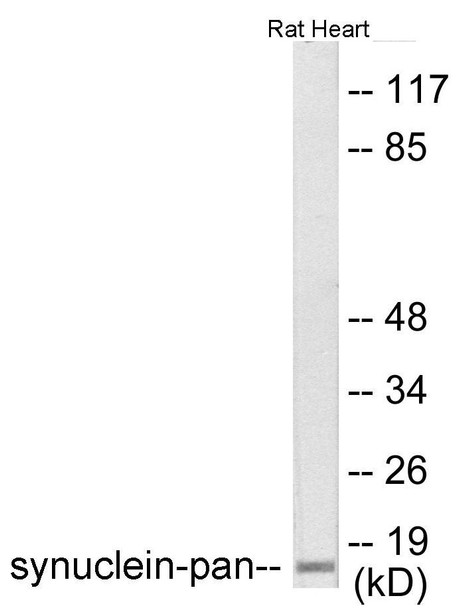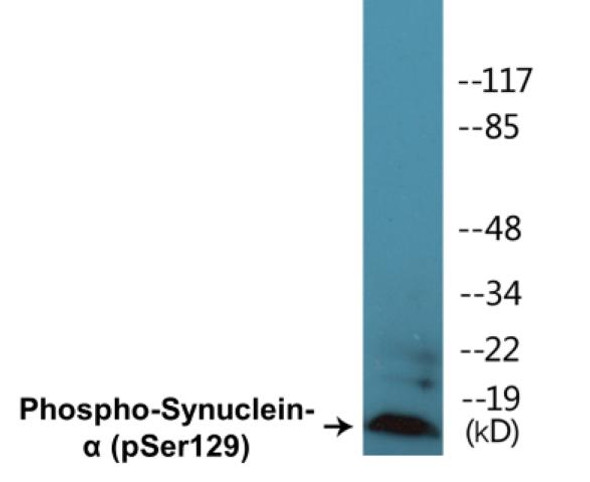Description
Synuclein-pan In-Cell ELISA
The Synuclein Pan-IN-Cell ELISA Kit is specifically designed for the accurate detection of synuclein levels in cell lysates and culture supernatants. This kit offers high sensitivity and specificity, ensuring precise and reliable results for a variety of research applications.Synuclein is a key protein involved in regulating neurotransmitter release and synaptic function, making it essential for studying neurodegenerative disorders such as Parkinson's disease.
By measuring synuclein levels, researchers can gain valuable insights into disease progression and potential therapeutic targets.Overall, the Synuclein Pan-IN-Cell ELISA Kit offers researchers a valuable tool for investigating the role of synuclein in neurodegenerative diseases and developing novel treatment strategies.
Synuclein-pan Cell-Based ELISA
| Product Description: | The Synuclein-pan Colorimetric Cell-Based ELISA allows for qualitative detection of Synuclein-pan in plated and fixed cells. |
| Target Synonyms: | Alpha-synuclein; Non-A beta component of AD amyloid; Non-A4 component of amyloid precursor; NACP; SNCA; NACP; PARK1 |
| Detection Target: | Phospho-IRAK1(Thr209) |
| Reactivity: | H, M, R |
| Pack Size: | 1 x 96 assays |
| Detection Method: | Colorimetric 450 nm |
| Format: | Cell-Based ELISA/In-Cell ELISA |
| Storage and Stability Guarantee: | 4°C/6 Months |
| Sample Type: | Plated & fixed cells |
| Range: | 5000 cells/well minimum |
| Time: | 4.5 hours |
Synuclein-pan Cell-Based ELISA Protein Information
| UniProt Protein Function: | SNCA: a member of the synuclein family. Abundantly expressed in the brain. Inhibits phospholipase D2 selectively. May integrate presynaptic signaling and membrane trafficking. Implicated in the pathogenesis of Parkinson's disease. A major component of amyloid plaques in the brains of patients with Alzheimer's disease. Two alternatively spliced isoforms transcripts have been identified. |
| UniProt Protein Details: | Protein type:Adaptor/scaffold Chromosomal Location of Human Ortholog: 4q21 Cellular Component: Golgi apparatus; nuclear outer membrane; mitochondrion; rough endoplasmic reticulum; lysosome; extracellular region; fibril; terminal button; inclusion body; cell cortex; mitochondrial respiratory chain complex I; cytosol; actin cytoskeleton; synaptic vesicle; platelet alpha granule membrane; growth cone; perinuclear region of cytoplasm; axon; cytoplasm; plasma membrane; ribosome; cell junction; nucleus Molecular Function:protein domain specific binding; identical protein binding; histone binding; zinc ion binding; kinesin binding; ferrous iron binding; microtubule binding; caspase inhibitor activity; beta-tubulin binding; magnesium ion binding; phosphoprotein binding; protein N-terminus binding; oxidoreductase activity; Hsp70 protein binding; calcium ion binding; dynein binding; protein binding; copper ion binding; phospholipase binding; phospholipid binding; tau protein binding; fatty acid binding; alpha-tubulin binding Biological Process: regulation of long-term neuronal synaptic plasticity; negative regulation of serotonin uptake; regulation of acyl-CoA biosynthetic process; adult locomotory behavior; positive regulation of apoptosis; negative regulation of norepinephrine uptake; mitochondrial membrane organization and biogenesis; microglial cell activation; response to lipopolysaccharide; positive regulation of endocytosis; dopamine biosynthetic process; negative regulation of transcription from RNA polymerase II promoter; negative regulation of caspase activity; negative regulation of monooxygenase activity; fatty acid metabolic process; positive regulation of neurotransmitter secretion; regulation of dopamine secretion; negative regulation of dopamine uptake; negative regulation of histone acetylation; calcium ion homeostasis; negative regulation of exocytosis; response to magnesium ion; negative regulation of protein amino acid phosphorylation; behavioral response to cocaine; receptor internalization; phospholipid metabolic process; fibril organization and biogenesis; synapse organization and biogenesis; dopamine uptake; negative regulation of neuron apoptosis; response to iron(II) ion; positive regulation of receptor recycling; aging; caspase activation; response to drug; neutral lipid metabolic process; protein destabilization; regulation of macrophage activation; regulation of glutamate secretion; negative regulation of microtubule polymerization; positive regulation of peptidyl-serine phosphorylation; negative regulation of dopamine metabolic process; organelle ATP synthesis coupled electron transport; regulation of locomotion; synaptic vesicle endocytosis; positive regulation of release of sequestered calcium ion into cytosol; regulation of excitatory postsynaptic membrane potential; negative regulation of transporter activity; negative regulation of apoptosis Disease: Parkinson Disease 4, Autosomal Dominant; Dementia, Lewy Body; Parkinson Disease 1, Autosomal Dominant |
| NCBI Summary: | Alpha-synuclein is a member of the synuclein family, which also includes beta- and gamma-synuclein. Synucleins are abundantly expressed in the brain and alpha- and beta-synuclein inhibit phospholipase D2 selectively. SNCA may serve to integrate presynaptic signaling and membrane trafficking. Defects in SNCA have been implicated in the pathogenesis of Parkinson disease. SNCA peptides are a major component of amyloid plaques in the brains of patients with Alzheimer's disease. Four alternatively spliced transcripts encoding two different isoforms have been identified for this gene. [provided by RefSeq, Mar 2009] |
| UniProt Code: | P37840 |
| NCBI GenInfo Identifier: | 586067 |
| NCBI Gene ID: | 6622 |
| NCBI Accession: | P37840.1 |
| UniProt Secondary Accession: | P37840,Q13701, Q4JHI3, Q6IAU6, A8K2A4, |
| UniProt Related Accession: | P37840 |
| Molecular Weight: | 140 |
| NCBI Full Name: | Alpha-synuclein |
| NCBI Synonym Full Names: | synuclein, alpha (non A4 component of amyloid precursor) |
| NCBI Official Symbol: | SNCA |
| NCBI Official Synonym Symbols: | PD1; NACP; PARK1; PARK4 |
| NCBI Protein Information: | alpha-synuclein; synuclein alpha-140; non A-beta component of AD amyloid |
| UniProt Protein Name: | Alpha-synuclein |
| UniProt Synonym Protein Names: | Non-A beta component of AD amyloid; Non-A4 component of amyloid precursor; NACP |
| Protein Family: | Alpha-synuclein |
| UniProt Gene Name: | SNCA |
| UniProt Entry Name: | SYUA_HUMAN |







